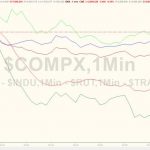The U.S. Federal Reserve (the Fed) raised interest rates again today, marking its eighth hike for the expansion. This was a slam-dunk decision—fiscal stimulus has pushed U.S. GDP (gross domestic product) growth rates well above the economy’s long-term potential, the unemployment rate is hovering near a 50-year low1 and core inflation is within a rounding error of the Fed’s 2% target.2 For a central banker, that’s basically mission accomplished. Now, it’s time for the Fed to get the funds rate back up to normal levels—and we see today’s decision as part of a careful and gradual sequence of hikes designed to achieve that normalization.
Economists widely anticipated today’s move by the Fed. One important nuance of the Fed’s statement today was that the central bank decided to remove a key sentence that previously said: “the stance of monetary policy remains accommodative, thereby supporting strong labor market conditions…” Put differently, with the federal funds rate now breaching 2%, the Federal Open Market Committee (FOMC) no longer sees interest rates as being particularly supportive to the economic outlook. We are entering the more mature phase of the tightening cycle which, in a very simple sense, diminishes how many cumulative hikes the Fed will likely be able to deliver going forward. Bond markets initially staged a small rally on the news with the 10-year U.S. Treasury yield dipping very briefly to 3.06%.
While today’s decision came as a surprise to no one, the Fed’s response to events over the next several months could prove to be pivotal for financial markets.
Trade wars and the near-term Fed path
Market participants have used a range of adjectives to describe the recent escalation of trade tensions between the U.S. and China—from spat to skirmish to war. It feels like a trade war to us. With the new penalties that went into effect on Monday, the U.S. has now imposed tariffs on roughly half of all imports from China. And the guidance from President Trump is that “if China takes retaliatory action against our farmers or other industries [which they did on Monday], we will immediately pursue…tariffs on approximately $267 billion of additional imports.” That escalation, which looks increasingly likely, would mark a full-blown trade war with effectively all bilateral trade between the U.S. and China being exposed to new and significant penalties.








Leave A Comment